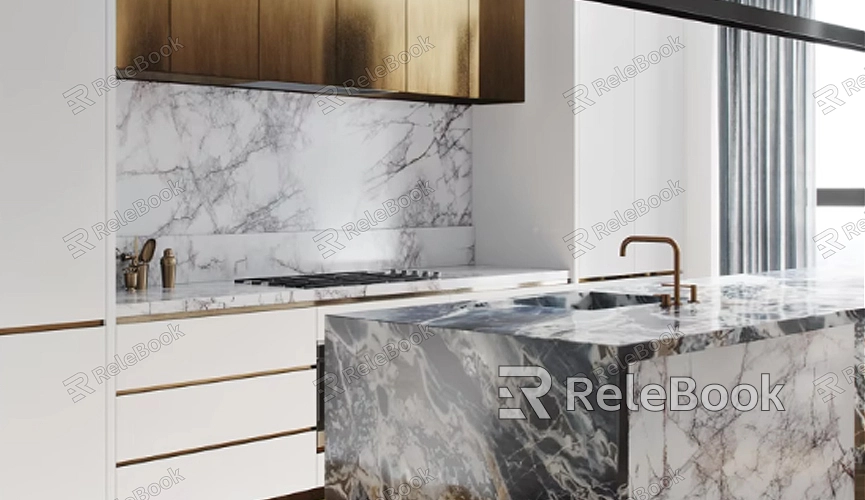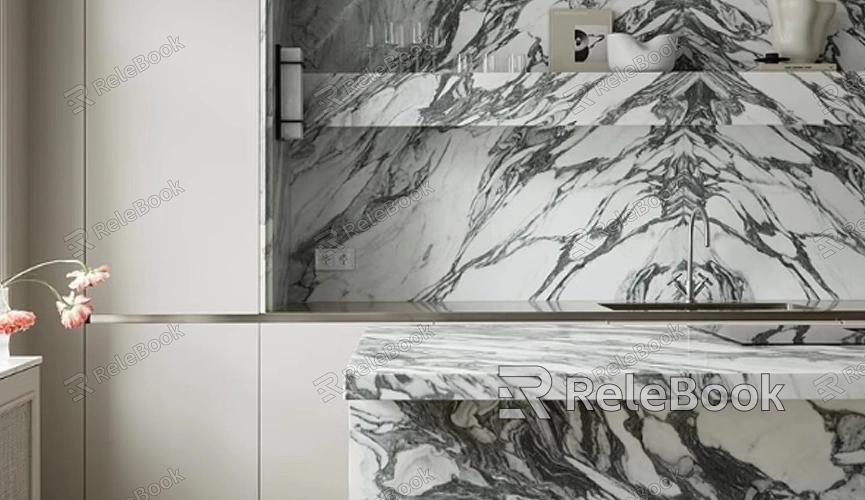How to Apply a Texture to a 3D Surface?

Preparing the Texture
Before applying a texture to a 3D surface, it’s crucial to prepare the texture itself. A texture is essentially a 2D image that wraps around a 3D model to give it color, detail, and depth. The quality and suitability of your texture will significantly impact the final appearance of your model.
1. Choosing the Right Texture
The first step is selecting a texture that complements your 3D model. Consider the material you're simulating—whether it's wood, metal, fabric, or something else. High-resolution textures are preferable, as they offer more detail and flexibility during the application process. Make sure the texture is seamless, especially if it will be tiled across the surface, to avoid visible seams or repeats.
2. Editing the Texture
In many cases, you’ll need to edit your texture to fit your specific needs. This could involve resizing, adjusting the color balance, or modifying the contrast to better suit the lighting conditions of your scene. Software like Adobe Photoshop or GIMP is commonly used for texture editing. Ensure that the texture’s resolution matches the needs of your project—too high and it might slow down rendering, too low and it could appear pixelated.
Mapping the Texture to the 3D Model
Once your texture is prepared, the next step is mapping it to the 3D surface. This process, often referred to as UV mapping, involves wrapping the 2D texture around the 3D model.
1. Understanding UV Coordinates
UV mapping is the process of projecting a 2D image (your texture) onto a 3D model by assigning coordinates to the vertices of the model. The "U" and "V" refer to the axes of the 2D texture, as opposed to the "X," "Y," and "Z" axes of the 3D model. By manipulating these UV coordinates, you can control how the texture wraps around your model.
2. Unwrapping the Model
Before applying the texture, you need to unwrap your 3D model. Unwrapping is the process of flattening the 3D model into a 2D representation so that the texture can be applied correctly. Most 3D modeling software, like Blender, Maya, or 3ds Max, provides tools for UV unwrapping. The goal is to create a UV map that minimizes stretching and distortion of the texture. This often involves strategically placing seams on your model, where the texture can split without affecting the overall appearance.

Applying the Texture
With your UV map ready, you can now apply the texture to your 3D surface.
1. Importing the Texture
Start by importing the texture into your 3D software. In Blender, for example, you would add the texture through the Shader Editor by connecting an Image Texture node to the material’s base color. In other software, the process is similar—locate the texture input for your material and load the image file.
2. Adjusting the Material Properties
Textures are often part of a larger material that includes other properties like bump, normal, and specular maps. These additional maps can enhance the realism of your texture by simulating surface details, like the grooves of wood or the roughness of stone. Adjust the material properties to achieve the desired effect, paying attention to how the texture interacts with light in your scene. You may also need to scale or rotate the texture to ensure it fits perfectly on your model.
Fine-Tuning the Texture Application
After the texture is applied, it’s time to fine-tune the results. This step ensures that the texture looks natural and convincing on the 3D surface.
1. Checking for Distortion
Examine your model for any distortion or stretching of the texture. This can occur if the UV map is not aligned correctly. If you notice any issues, go back to the UV map and adjust the seams or unwrap method. In some cases, you may need to modify the model’s geometry to reduce distortion.
2. Blending and Tiling
If your model requires the texture to be tiled or repeated, ensure that the tiling is seamless. You may need to blend the edges of the texture or use a technique like UV stitching to make the tiling appear natural. Additionally, if your model has multiple textures, blending them at the seams is crucial to avoid harsh transitions between different materials.
Rendering and Final Adjustments
The final step in the texture application process is rendering and making any last adjustments.
1. Test Rendering
Perform a test render to see how the texture looks in your scene. This will give you a better idea of how the texture interacts with lighting and shadows. Make note of any areas that need improvement, such as texture brightness, or contrast.
2. Post-Processing
After rendering, you may want to do some post-processing to enhance the texture further. This could involve adjusting the color balance, adding noise to simulate grain, or applying a vignette effect to focus attention on specific areas of the model. Software like Photoshop or After Effects is commonly used for post-processing.
FAQ
What is UV mapping?
UV mapping is the process of projecting a 2D texture onto a 3D model by assigning UV coordinates to the vertices of the model.
How do I avoid texture distortion on my model?
To avoid distortion, carefully unwrap your model to create a UV map that minimizes stretching. Adjusting seams and tweaking the UV layout can help reduce distortion.
What is a seamless texture?
A seamless texture is a 2D image that can be tiled repeatedly without showing visible seams or edges, making it ideal for covering large surfaces.
Can I apply multiple textures to one model?
Yes, you can apply multiple textures to different parts of a model. This is commonly done using different UV maps or by blending textures at the seams.
What software is best for texture application?
Popular software for texture applications includes Blender, Maya, 3ds Max, and Substance Painter. Each offers unique tools for UV mapping, material creation, and rendering.

